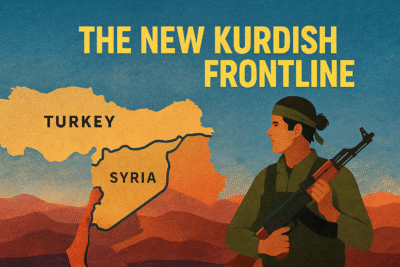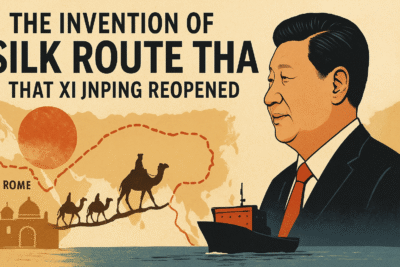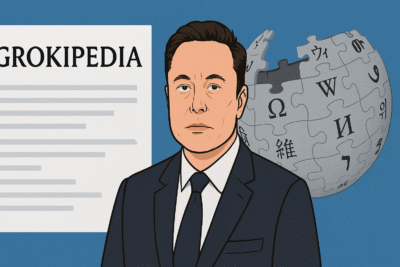
If you follow the news, there’s a high probability that you have read about a humanitarian crisis in Gaza, a Strip sandwiched between Israel, Egypt, and of course, Palestine, whose part it is, technically. Let’s recap what’s all happening in Gaza, and about this Strip where Israel is in a state of war against the Palestinian armed group called Hamas since the latter conducted raids on the former on October 7, 2023.
Gaza started facing a humanitarian crisis soon after Israel pounded it with missiles, following the Hamas burst that killed hundreds of Israelis, also foreigners, and that saw abductions of over 250 people.
What’s Gaza currently looks like
- Gaza is experiencing what the UN secretary-general describes as the “cruelest phase” of Israel’s war, with the population facing catastrophic conditions. Starvation-related deaths have reached at least 29, and aid deliveries remain drastically insufficient—just 107 humanitarian trucks entered Gaza on Thursday, compared to the pre-war average of 500–600 per day. UN agencies warn that even a return to previous aid levels would be inadequate due to the total depletion of supplies after months of blockade.
- The Israeli military continues to target areas previously designated as “safe zones,” such as al-Mawasi, leading to further civilian casualties. Recent strikes killed at least seven Palestinians in al-Mawasi, and attacks continue in Khan Younis and northern Gaza.
- The humanitarian situation is dire, with the UN and Human Rights Watch warning of imminent famine. The blockade on aid, food, fuel, and medical supplies has lasted over two months, pushing over two million residents to the brink of starvation.
It’s a conflict zone with military operations and consequent civilian disaster
- Israel’s military campaign, now approaching 600 days, has intensified, particularly in Rafah and central Gaza. Vast areas of Rafah have been “flattened,” with research groups documenting the destruction and forced displacement of civilians into ever-smaller areas controlled by the Israeli military.
- The Israeli government recently approved a plan known as “Gideon’s Chariots,” which involves further forced displacement of Gaza’s population and the potential for a full occupation of the territory. Israeli leaders have stated intentions to “completely destroy” Gaza and forcibly move its population if no deal is reached with Hamas.
- Civilian casualties remain high. On May 25, an Israeli strike killed nine of a Gaza doctor’s children in Khan Younis. Gaza health officials report that the killing of children has become routine in the conflict.
Talks for peace are going on along with strikes for capture
- Ceasefire negotiations are stalled. The Israeli delegation returned from Doha, Qatar, without progress, and Prime Minister Netanyahu has introduced new preconditions, including the implementation of Donald Trump’s Gaza plan—demands widely condemned internationally as amounting to ethnic cleansing.
- Families of Israeli hostages continue to protest, urging Netanyahu to prioritize a deal for their release. There are currently 58 Israeli hostages believed to remain in Gaza, with only 23 thought to be alive.
- Israel’s anti-war movement, though still small, is reportedly growing, with increasing public demonstrations against the ongoing occupation and military campaign.
It’s complex with a long international and regional context
- The United Nations and human rights organizations are calling for an immediate end to the blockade and for all parties to uphold international humanitarian law.
- The Israeli military intercepted a missile launched from Yemen, underscoring the regional risks of escalation.
- The situation in Gaza is now widely described by international observers as one of the world’s worst humanitarian crises, with experts warning of genocide and crimes against humanity if current policies continue.
Now, let’s go to the short story of Israel, promised in the headline
(Beginning with a disclaimer: This was originally written in a blog post, India)
Israel is a new nation-state even in idea. It was the name of a bunch of tribes. They lived in Palestine.
Some find it bizarre to register that Palestine belonged to Israeli tribes, who came to be known as Jews. Now, Jews live in a new country, created by the logic of power and force, carving out a major chunk of Palestine.
A new Palestine is proposed, to be called the State of Palestine, on the remaining or leftover land of ancient or Jewish Palestine. This Palestine has and will have Muslims mostly.
Jews and Muslims are fighting for their identities and beliefs that Palestine, irrespective of what name they use to address it, belong to them.
So, the story of Israel is essentially a partial story of Palestine.
Jews believe that Jerusalem was founded by legendary King Solomon, who also built the famous Temple of Jerusalem. The primary sources of information about Solomon are the Hebrew Bible and the Old Testament. He was the son and successor of King David, who united all tribes of Israel into one nation. The hypothesised time of Solomon’s reign is the 10th century before Christ.
The Temple of Jerusalem remains the holiest place for Jews, the people who created Israel as a nation in 1948. In its history, characterised by the expansion of empires, Jerusalem faced several invasions from both Egyptian and later Roman forces, resulting in the assault on its holy temple.
In 70 BC, the Romans razed a reconstructed temple situated in Jerusalem, prompting a mass exodus of Jewish people. This tumultous expulsion continued for centuries. An avid Jew would refer to these waves of expulsion of the jewish people from their homeland with passion.
In the seventh-eighth century, the Islamic Caliphate led by the Ummayid rulers seized the control of Jerusalem. This triggered another wave of flight of the Jewish population, and it continued again for centuries. Europe, particularly in and around Germany, emerged as their favourite destination. The reason for this choice of place is in the realm of speculation.
With the emergence and consolidation of nation-states across Europe in the late 18th and 19th centuries, there came pressure on the Jewish people to find a land for themselves. At that point of time, they belonged to the whole world or nowhere.
The 19th century saw the beginning of what is called the Zionist movement, which called for establishing a Jewish homeland in and around Jerusalem in Palestine, their ancient home.
The Zionist movement consolidated over the two World Wars, with German dictator Adolf Hitler playing a catalyst in the persecution of the Jewish people. Jews, aided by the US and the UK, flocked to Palestine in huge numbers. And with the British proposal in the United Nations after the Second World War, the Jews got a home for themselves in Palestine, naming it Israel — the nation promised by Solomon for those worshipping at the Temple of Jerusalem.
The fall of the Ottoman Empire — the Caliphate — after the First World War ended in 1919 meant that the region on which Israel stands today became a British Protectorate. This helped the immigration of Jews from Germany and other places gain pace. The British supported the idea of a ‘separate homeland’ for Jews in Palestine.
Jews consider this area as the land of their ancestors, while Arab Muslims also stake their claim to the same land for having occupied the turf for centuries while Jews spread out across the world, including India, which they have described as the only place where they were not persecuted for their faith. Tensions between the two communities, Jews and Muslims, intensified. In 1947, the United Nations stamped its decision to partition Palestine into two sections, one for Jews and the other for Arab communities.
Amid Arab opposition, on May 14, 1948, Jewish leaders declared the establishment of the State of Israel, and the British departed. Immediately afterward, the first Israel-Arab war erupted, leading to the displacement of nearly seven hundred thousand Palestinians.
In the post-war settlement, Britain was given the Mandate for Palestine and Trans-Jordan (areas including Israel, West Bank, and Gaza). Jewish immigration to Israel gained pace.
The struggle between Israel and the Palestinians has persisted ever since. They have fought multiple wars. With every war, Israel has emerged as a bigger power with more land under its control. Israel’s motto has been that it requires to win every conflict because if its enemies win, the Jewish nation (people) will be consigned to history. Israel’s aim is to gain recognition as a Jewish state on the world stage, while Palestine continues to resist this. That’s the crux of the Israel-Palestine story, conjoined, separated and intertwined.



